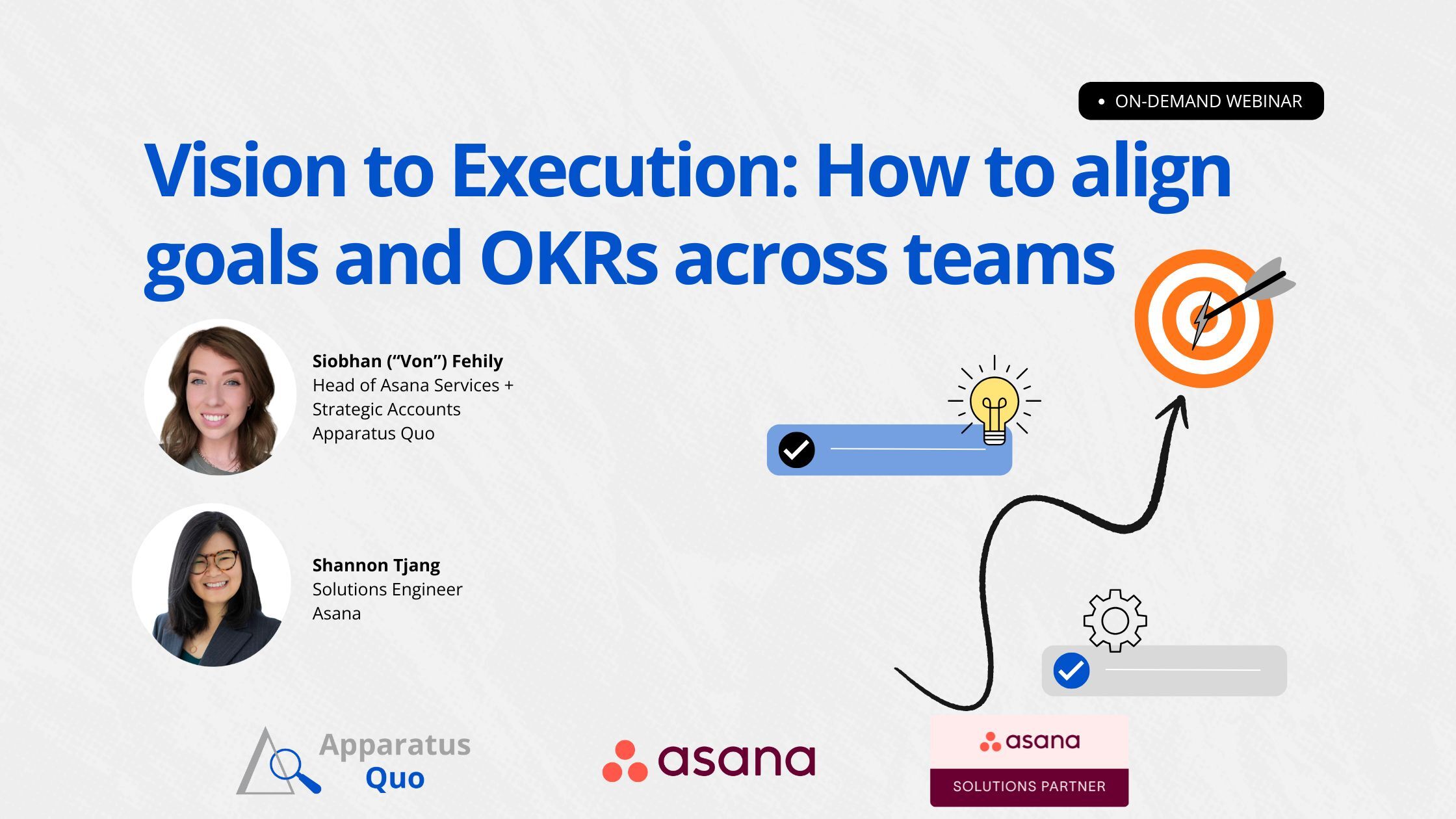The real challenge: bridging intent and impact
Even high-performing teams often find themselves asking:
-
Why does this work matter?
-
How does it align with the bigger picture?
-
Are we truly moving in the right direction, together?
This is the strategy-execution gap, where intent fails to meet impact. That’s where goals and OKRs come into play not as a buzzword, but as a powerful bridge.
Why do goals matter more than ever?
Goals aren’t just targets, they’re connections to purpose.
They create clarity, motivation, and a shared direction. When people understand how their day-to-day work contributes to a larger mission, they’re naturally more engaged, productive, and aligned.
"Average companies give their people something to work on. The most innovative organisations give their people something to work toward." - Simon Sinek, New York Times bestselling author of "Start with Why"
But without clarity, we end up with misalignment, redundant work, and ultimately, lost productivity.
The 4 keys to operationalising goals into a powerful system
It’s not enough to just 'set and forget', you need a system to make goals real for you and your team:
🔑 Measure what matters
Focus on outcomes, not just activity. Track the metrics that truly move the business forward.
🔑 Create alignment to broader objectives
Don’t just cascade goals, connect the dots. Help every team see how their work contributes to broader outcomes.
🔑 Track progress with rhythm
Weekly or fortnightly rhythms help to build momentum and surface roadblocks early. You can do this live in team meetings, or even async with your goals tooling to keep stakeholders up to date if you are on progress, at risk or off track to your goals. Note - AQ does this in our weekly 'Level 10' team meeting each Tuesday!
🔑 Adjust course when needed
Strategy is not static. Regular reflection and refinement ensure you stay on course without stalling progress. Dropping a goal or refining its structure is sometimes the best choice as new information comes to light.
🔓 When these elements are in place, goals become more than a checkbox, they become a living system.
Why we use the OKR methodology
“OKRs are especially useful when we want to align teams and outcomes in a way that helps drive collaboration and transparency.” – Von Fehily, Head of Asana Services at Apparatus Quo
At Apparatus Quo and Asana, we rely on OKRs not just for ourselves but to help clients build high-performing teams and systems.
Why?
...because OKRs link daily work to the broader strategy, create a culture of accountability, encourage cross-functional collaboration and make progress visible and adaptable.
Key takeaways:
We’re always looking for ways to help teams turn strategy into execution.
Here are five key takeaways to double down on when it comes to goals:
- Clarity beats activity: Move beyond busywork by connecting daily tasks to strategic goals.
- Co-creation builds buy-in: Collaborative OKR planning is now a non-negotiable, because ownership drives accountability.
- Goals shouldn’t be static: Reinforce regular check-ins to help teams pivot and adapt without losing focus.
- Progress needs to be visible: Lean into Asana’s visibility tools to replace clunky tracking systems with real-time insight.
- Culture is the engine: Build cultures where goal-setting is everyone’s responsibility and purpose is part of every project.
🎥 Watch the recording!
Ready to dive deeper? Catch the full webinar recording here and share it with your team. 🎯
